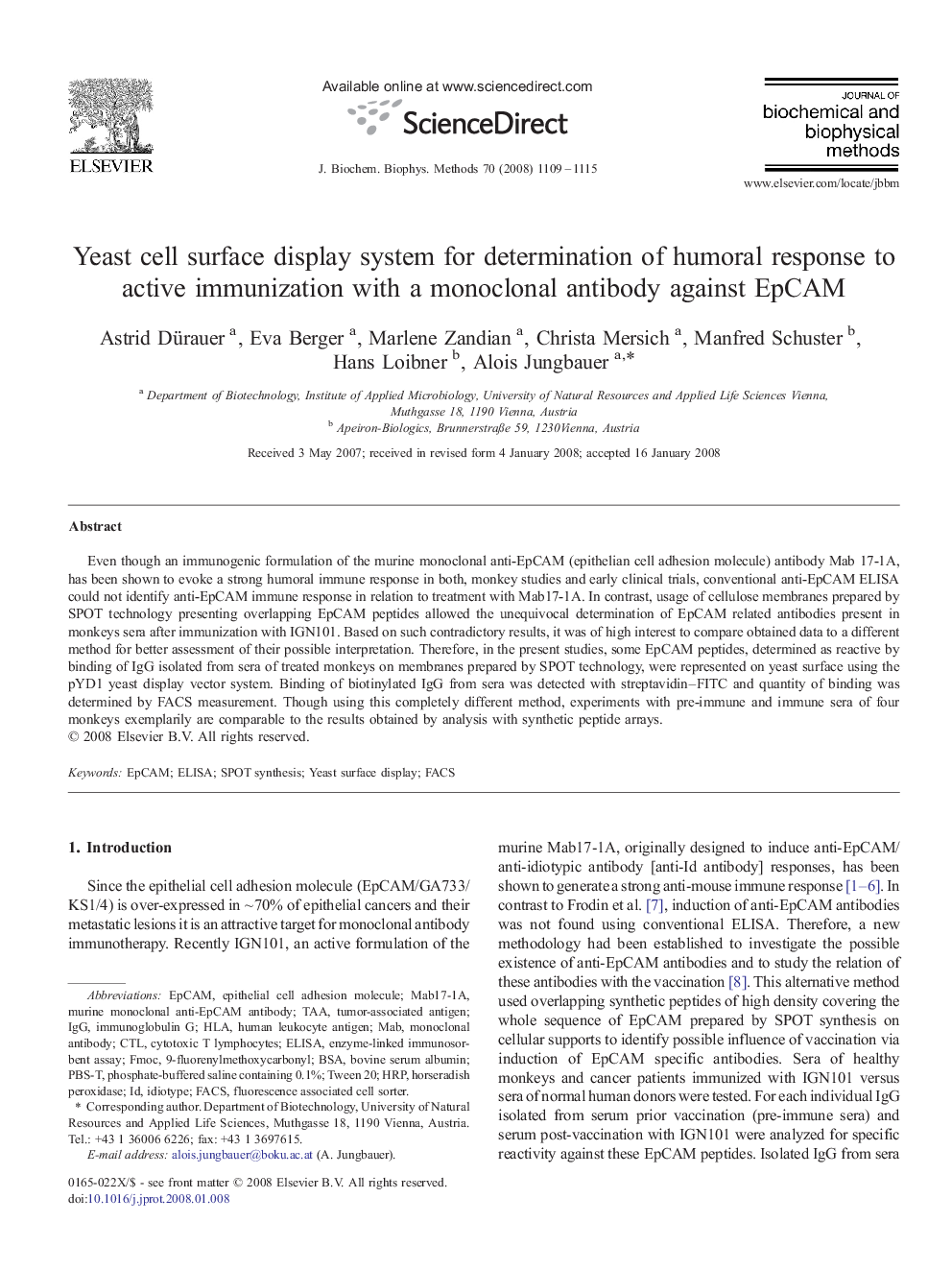| Article ID | Journal | Published Year | Pages | File Type |
|---|---|---|---|---|
| 1988396 | Journal of Biochemical and Biophysical Methods | 2008 | 7 Pages |
Even though an immunogenic formulation of the murine monoclonal anti-EpCAM (epithelian cell adhesion molecule) antibody Mab 17-1A, has been shown to evoke a strong humoral immune response in both, monkey studies and early clinical trials, conventional anti-EpCAM ELISA could not identify anti-EpCAM immune response in relation to treatment with Mab17-1A. In contrast, usage of cellulose membranes prepared by SPOT technology presenting overlapping EpCAM peptides allowed the unequivocal determination of EpCAM related antibodies present in monkeys sera after immunization with IGN101. Based on such contradictory results, it was of high interest to compare obtained data to a different method for better assessment of their possible interpretation. Therefore, in the present studies, some EpCAM peptides, determined as reactive by binding of IgG isolated from sera of treated monkeys on membranes prepared by SPOT technology, were represented on yeast surface using the pYD1 yeast display vector system. Binding of biotinylated IgG from sera was detected with streptavidin–FITC and quantity of binding was determined by FACS measurement. Though using this completely different method, experiments with pre-immune and immune sera of four monkeys exemplarily are comparable to the results obtained by analysis with synthetic peptide arrays.
